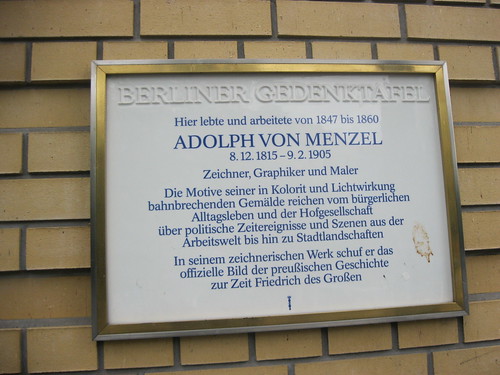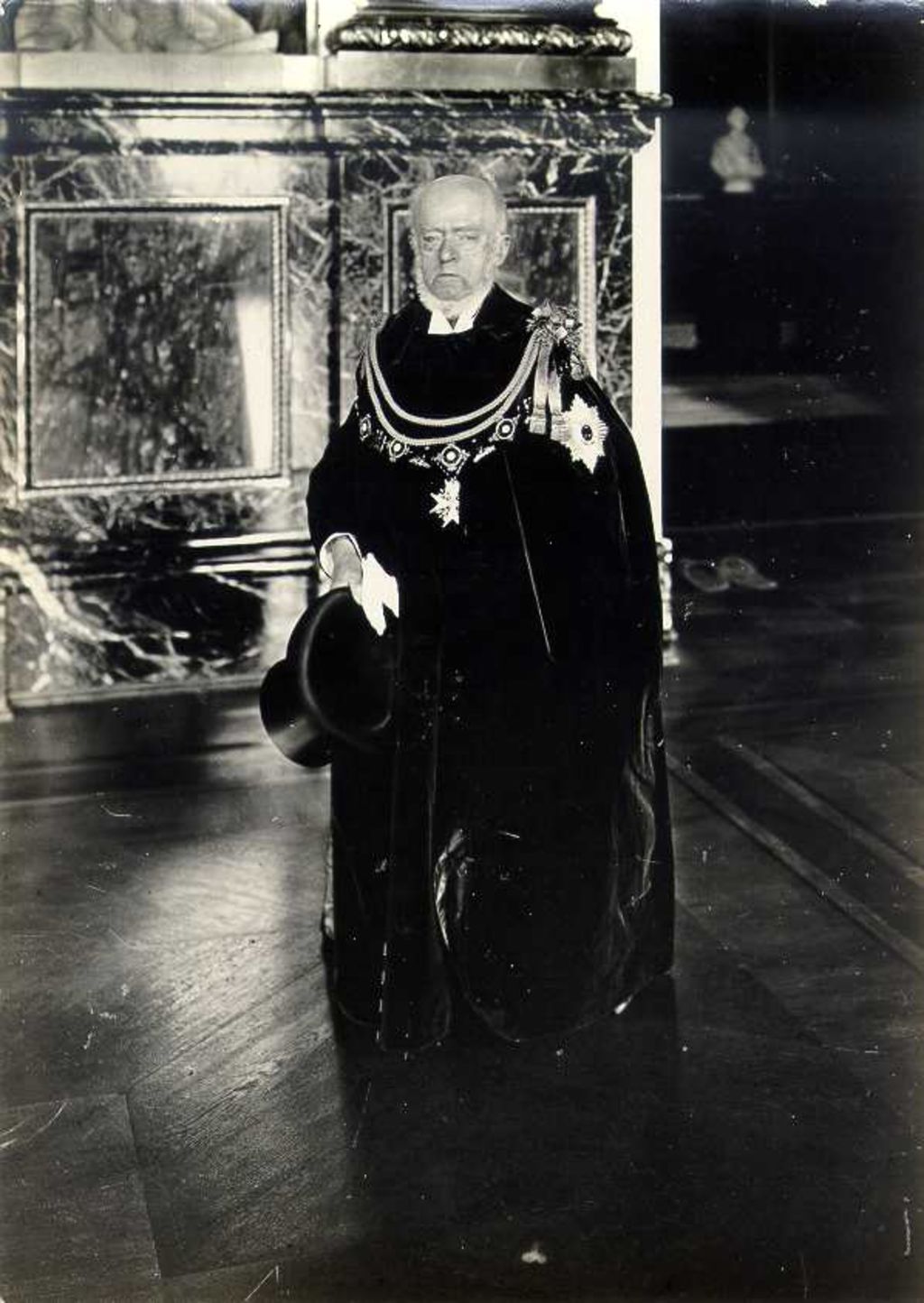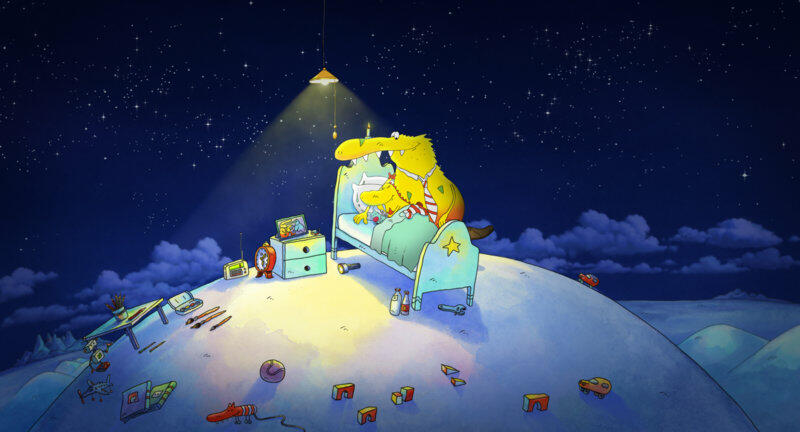This is the last part in the series of Carl Johann Arnold's memories on Adolph Menzel.
After two years of living
together with Menzel I was moving into my own studio and apartment.
As often as possible I was still staying with Menzel's. Mostly at the
evenings or on special occasions, where it was happy and comfortable
and he participated willingly in jokes and conversations. Ofttimes
appointments for further excursions would be made, e.G. to Potsdam,
where journeys on the water, aligned with fireworks, which he
especially loved, had been undertaken.
As I approached him once
again at one evening, to ask for his advice on one of my works, I
brought him a new piece, it was a deck of cards wherein I had
composed every single card as a picture.
He lay them out before
him, remained silent for a while and then turned to me saying: „there
you did something admirable!“
And later, during dinner,
he raised his glass offering to call each other informally by the
forename*.
The card deck later became
a possession of Empress Frederick.
In the meantime Menzel's
sister was married to the musician Krigar, by whom there exist some
beautiful compositions of songs and who acclaimed later the title as
a director of music. Also his brother Richard married pretty soon and
took on the photographic business of Gustav Schauer.
To not having to break
with his daily habits and not to be pulled out of his artistic
activity, Menzel stayed, despite her marriage, till his death
together with his sister and built together with her and her husband
a community.
That Menzel was supposed
to be a so called misogynist, is, how I can say from experiences,
never been the case.
He lead very gladly and
ofttimes throughout the whole evening conversations with ladies, who
could bind him intellectually in amicable entertainment. Thus he
was vividly interested in a lady which lived in the same house as
them, in Ritterstraße 43, the daughter of privy councilor Schaumann,
who visited the Menzels on a daily basis.
Subsequently I would like
to mention a matter, which is significant for Menzel's thoroughness
in his
creating and for his
energy. In his works he often depicted cavalry and everything that
has to do with riding. To inform himself exhaustively on the matter
he decided to learn how to ride by himself.
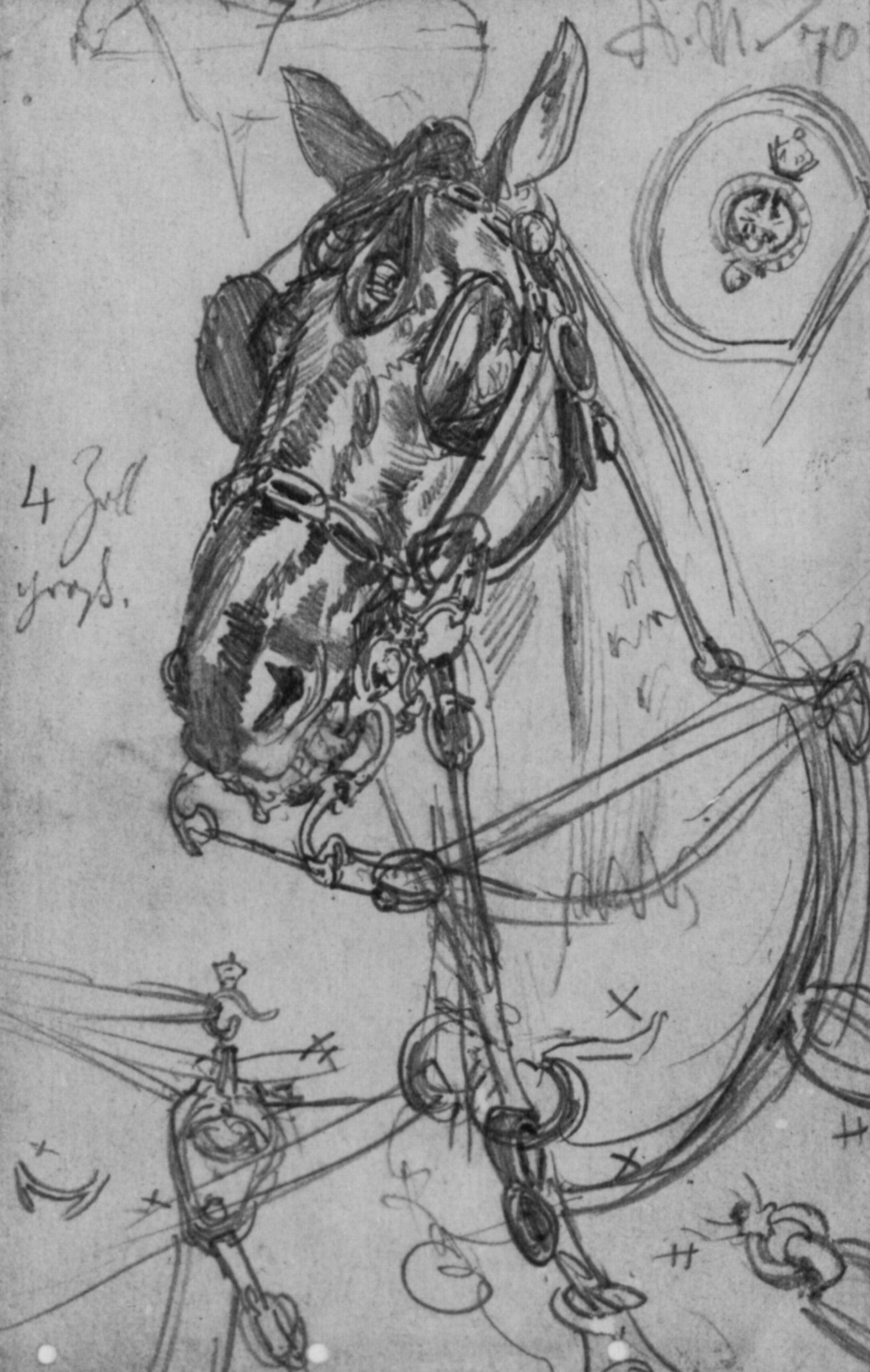 |
| study of a horse by Adolph Menzel, zeno.org |
Since I had already
organized a riding lesson together with several colleagues, Bennewitz
von Löfen, Spangenberg, P. Meyerheim, Feckert and others, he decided
to participate herein.
We then rode weekly on
several evenings (also with music), and funny was that the small
excellency always chose instead of a small horse constantly a huge
one, so that his legs wouldn't reach beyond the rim of the saddle.
Everything went well so far, with exception of one time, when all of
a sudden a „Halt!“ was commanded and Menzel was thrown over the
neck of his horse, but could get a hold of the tail of the horse
which went before his and thus came back into the saddle.
For the practical usage of
those studies he couldn't find time though for new commissions of a
new kind approached him.
In the first place he was
busy for many years with the important commission by king William I.
- to create the coronation in Königsberg as a huge monumental
painting, as far as I know through recommendation of the at that time crown prince Frederic.
 |
| preliminary coloured study of the coronation painting |
As a studio the saloon of the Garde-du-Corps in
the royal castle was prepared for him, so that the royals and
aristocrats had a smooth entrance for sittings.
 | |
| via zeno.org |
For this (painting) many
portraits were necessary which he executed all in watercolors and
which have later been acquired by the royal national gallery.
Although he didn't
appreciate being disturbed while working I was able to educate myself
while witnessing the progress of this great work.
| the coronation of king William I, Adolph Menzel, 1866 |
From that time on he
presumably did not miss any festivity at the royal court, where I saw
him often standing
in a
reveal or behind a curtain, how he was sketching his notes after
certain characters, telling me that his main work will begin when
he'd return home and everyone else went to bed.
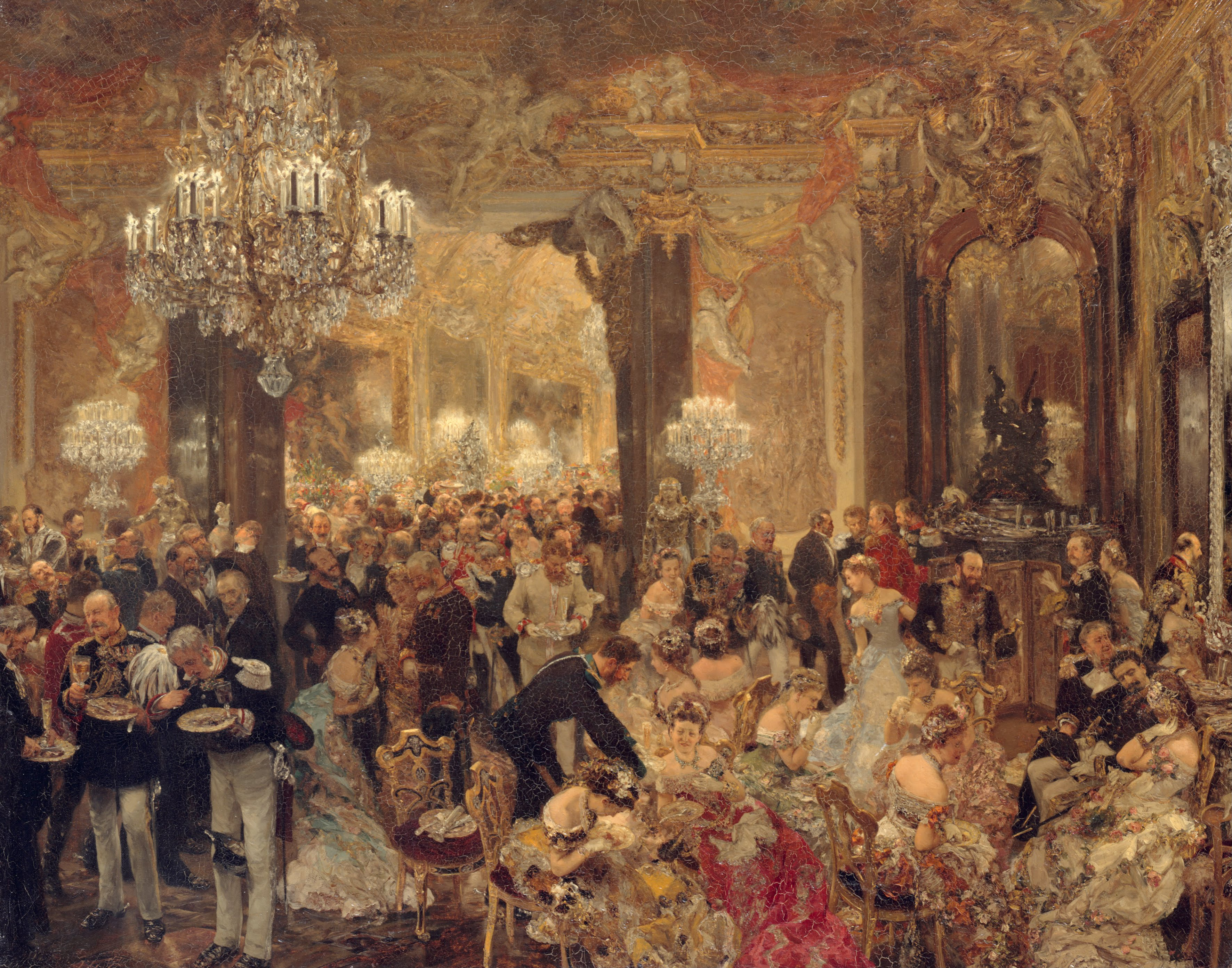 |
| the Ballsouper, Adolph Menzel, 1878 |
He painted several festivities, which don't need any further
explanation since they are sufficiently known.
Out of this time date the many decorations and badges, which
increased suchlike throughout the following years.
The last celebration, which I experienced together with Menzel, was
the one which the association of Berlin artists arranged to celebrate
his seventieth birthday. We had to wait for over two hours for his
appearance, for he was, as was commonly known, always unpunctual. (…)
Toast responded to toast and Menzel didn't let the opportunity pass
to clink glasses with everybody.
Thus the festivity continued in the happiest mood and lasted till the
early morning.
Soon my health condition forced me to leave Berlin and I settled down
in Weimar.
My now following relationship with Menzel consisted merely of
frequently visits in Berlin and
an exchange of letters up
until into his last years.
A great joy was for me
that as well my (son) Herbert, who lived himself as a painter in
Berlin, found the most cordially accommodation with them and was able
to raise glasses with him on Menzel's unfortunately last birthday.
It was a coincidence that
it was given to my son to portrait Menzel on the deathbed.
And thus I close with the
notations of my memories on our unforgettable great master and old
friend of our family.
Weimar, June 1905
* in German there is a distinction (like in french: "tu" and "vous") to address somebody in a formel "sie" (3rd person plural) or informal "du" (2nd person singular) way.

